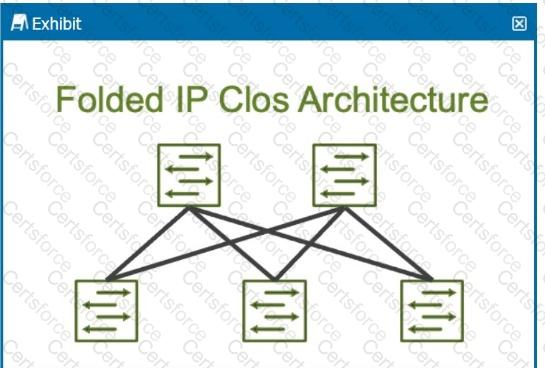What are two consequences of having all network devices in a single collision domain? (Choose two.)
Which two statements about IBGP are correct? (Choose two.)
Which statement is correct about areas in OSPF?
Exhibit:

How many stages are shown in the exhibit?
You want to enable a Junos device to support aggregated Ethernet interfaces. In this scenario, which configuration hierarchy would you use?
Which statement is correct about an IRB interface?
Which statement is correct about IBGP?
Exhibit:

Referring to the exhibit, at which interval will the interface be considered down if no hello packets are received?
What is the definition of a trunk interface on a switch?
Which three actions are required to implement filter-based forwarding? (Choose three.)